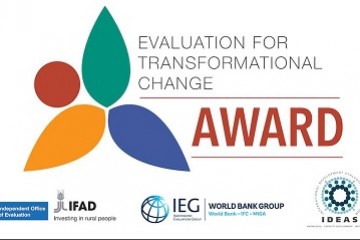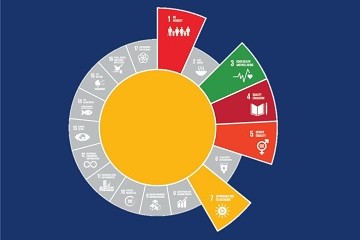Capacity Remuneration Markets in Europe
Capacity remuneration markets are a long-term, well-known phenomenon in the Americas, but relatively new to Europe. In the last years, however this has rapidly changed. This newsletter provides a short overview of the current discussions in Europe and illustrates proposed systems in selected European countries.
The worries on today’s power markets
Most European electricity markets are currently mainly organized as energy-only markets in which the market prices should in theory provide sufficient incentives for new investments in production capacity. The current markets, however, are characterised by increasing intermittent capacity, low margins on supply and in varying degrees by overcapacity and lower load factors for thermal plants. Energy companies are therefore increasingly confronted with ‘the missing money problem’; the revenues on electricity supplies are often insufficient to cover the operator’s total costs, including recuperation of investments. This especially holds for gas-fired capacity, as the spark spreads have been very low for a few years now. Several companies have responded to this by announcing plans to mothball part of their current production capacity and are lobbying for a solution.
Politicians fear the risks of supply disturbances, the risk of black-outs and high peak prices. Among all worries the special concern goes out to the mid-load plants that have an important system function in terms of following fluctuations in demand and intermittent supply during the day and securing the quality of power supply. It is in many cases exactly these plants that are most likely to be taken out of the market. Many stakeholders consequently advocate that establishing capacity remuneration markets is the solution to this problem. There are concerns however regarding the impact of these national reforms on the further integration of the EU electricity markets. Some stakeholders also emphasize that capacity remuneration schemes should not, effectively, become a support mechanism for gas and coal plants.
Demand and supply side solutions
In the ideal world the optimal organisation of the electricity market would start its balancing efforts on the demand side. Consumers would have sufficient flexibility in their energy demand to respond to high prices through either reducing demand or shifting demand over time. Most consumers in Europe however currently do not face real time-of-use tariffs and therefore do not respond as theory tells us. Moreover, development in smart grids, smart meters as well as smart appliances is not at the level that demand response is sufficiently triggered.
In the absence of readily available demand-side solutions governments are developing supply-side solutions to secure their national energy supply. Plans are especially focused on establishing Capacity Remuneration Mechanisms (CRMs) which aims to direct investments in power capacity a few years ahead from now and hence secure future electricity supply. Several CRMs are designed to especially create incentives for non-intermittent capacity, with fast ramp-up rates which are needed to balance the system.
The benefits of CRMs and the various types
The main short-term market benefits of CRMs include:
- advance payment for generation capacity (addressing the missing money problem and directing future investments);
- improving revenue stream for investors (which can also lower financing costs of new capital);
- mitigation of price spikes;
- reducing the risk of unilateral mothballing of current mid-load capacity;
- lowering the potential for gaming opportunities (from generators that are unavailable in times of unbalance).
An important matter to address is whether specific CRMs are properly designed as to also provide the longer-term benefits that are being sought. That is, providing longer-term investor and market stability, while at the same time, not imperilling targets for decarbonisation of power production and further penetration of renewable production. Related to this is the question whether CRMs should be designed to actively support these targets, or if that conflicts with existing policies for decarbonisation. In addition, an important question is whether the design of a CRM pursues meeting these targets in the most efficient way. To that extent it is important to ensure that CRMs do not hamper –and optimally facilitate - the further development of demand-side measures as well as to ensure that CRMs not only support national solutions to supply security, but take into account the developments of establishing the internal European market.
It should of course be noted that CRMs are a risk mitigation mechanisms which – as most risk mitigation measures – have a cost that are ultimately paid by society.
Typically five types of capacity remuneration mechanisms are distinguished:
| CRM type | Characteristics | Selected examples |
| Strategic reserve | Generation capacity is set aside and is procured via a tender | Finland and Sweden |
| Capacity payment | A fixed price is paid to generators/consumers for available capacity | Ireland, Italy*, Spain* and Romania |
| Capacity obligation | Obligations are imposed on large consumers and on suppliers to contract certain capacity including a reserve margin, with penalties for non-availability and possibly with a market for capacity certificates | France, Greece |
| Capacity auction | A centralised scheme in which the total required capacity is set in advance of supply and procured through an auction | Planned in the UK and Spain |
| Reliability option | An auction-based system in which a financial instrument is used to cap the electricity purchase price in peak periods. Generators must be available when called in situations when the spot price exceeds the strike price, or pay the difference between the two prices. | Proposed in Italy and Germany |
*: system currently in operation; countries are in the process of changing their system
Various national solutions
With each country having its own production portfolio and specific policy goals the design of CRMs in Europe vary widely. Large variations in national capacity and the expected consequences for reliability of the system are a main driver. For example in Germany, the introduction of a capacity mechanism is closely linked to the phase-out of nuclear and the integration of large amount of renewables. A large share of planned decommissioning is also a main driver for the plans in Poland, whereas current and anticipated high growth of renewable capacity is a main driver in among others Spain, the UK, Italy and France. The table below provides a more detailed description of four planned CRMs.
| Country | United Kingdom | Spain |
|
Setting |
Introducing CRM as part of wider electricity market reforms and ambitious renewable energy targets |
|
|
Arguments for CRM |
CRM seen as necessary to ensure security of supply as older non-intermittent power plants close and large intermittent new capacity is expected (mainly onshore and offshore wind) |
|
|
Main design features |
|
|
|
Planning |
First auction in 2014 for winter 2018 |
|
| Country | France | Italy |
|
Setting |
The French market is characterised by high demand variations (as result of high share of electric heating) and high share of baseload capacity (nuclear, coal). |
The Italian market strongly depends on imports and has frequent balancing problems. A further shift from conventional thermoelectric power to renewable power is even further increasing the balancing problems. |
|
Arguments for CRM |
CRM seen as necessary to ensure security of supply especially in the light of high peak variations, a growing amount of renewables and the need to address the missing money problem. |
|
|
Main design features |
|
|
|
Planning |
|
|
The broader scope of electricity market reforms
CRMs are not a development in itself, but often part of a broader electricity market reform. This is among others the case in the UK, Poland, Spain and Italy. For each specific market it is important to understand the exact nature of the problems that the market and the entire economy is facing in order to conclude whether a CRM is part of the preferred solution. If a CRM is part of that solution, it is important to understand the dynamics between various design elements of the electricity market reforms as well as the synergies between solutions in interconnected markets.
This newsletter is based on recent work jointly conducted by SQ Consult, Cambridge Econometrics and Element Energy. The parties are currently developing an analytical tool to further analyse the various design elements of capacity remuneration mechanisms and further electricity market reforms. The authors thank their colleagues Sergio Ugarte (SQ Consult), Hector Pollitt (Cambridge Econometrics) and Shane Slater (Element Energy) for their valuable contributions.




